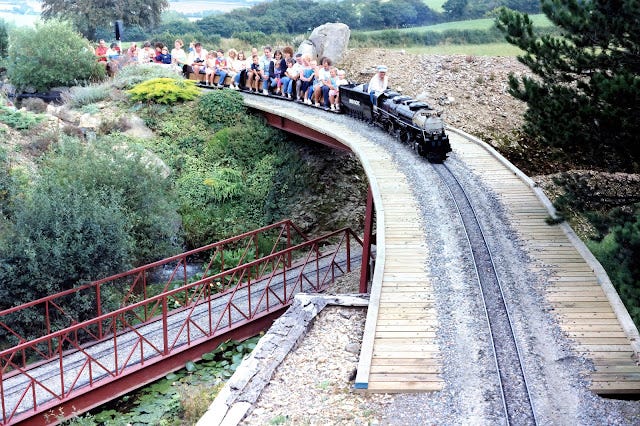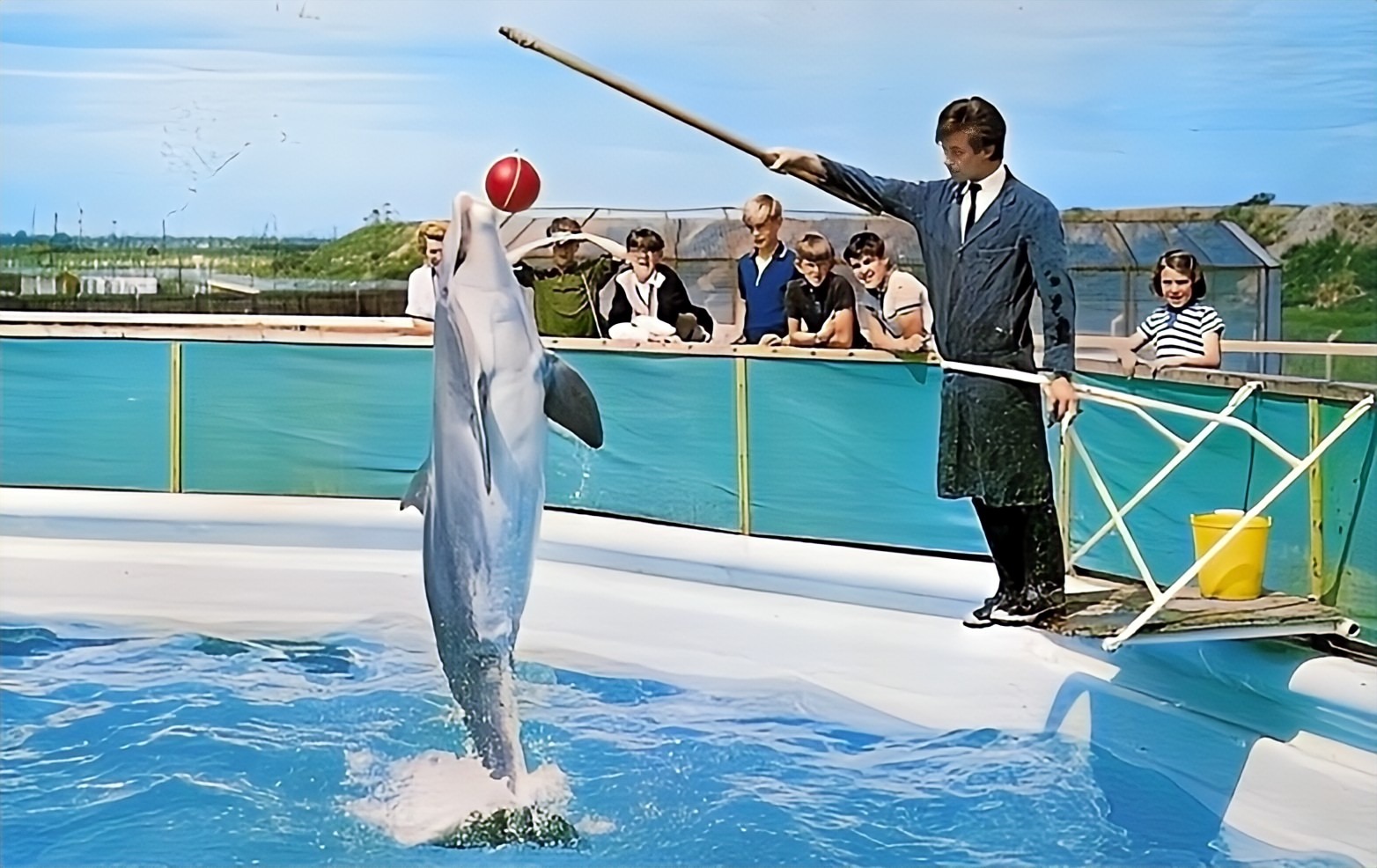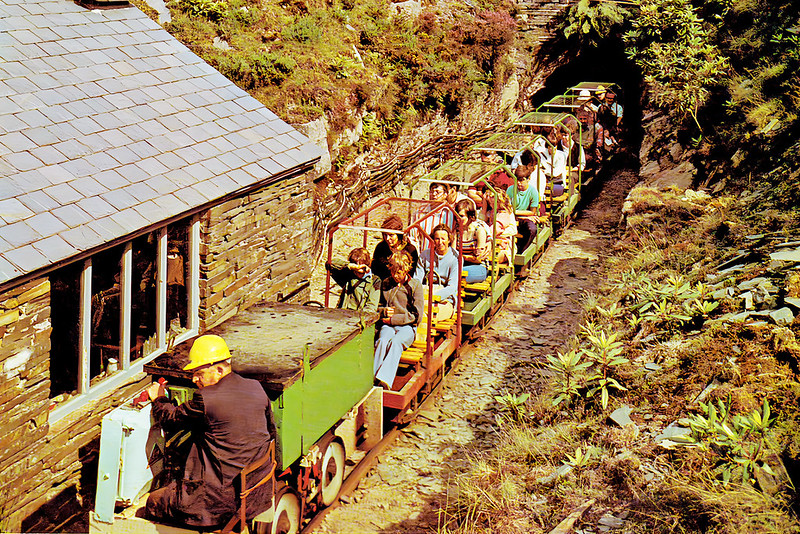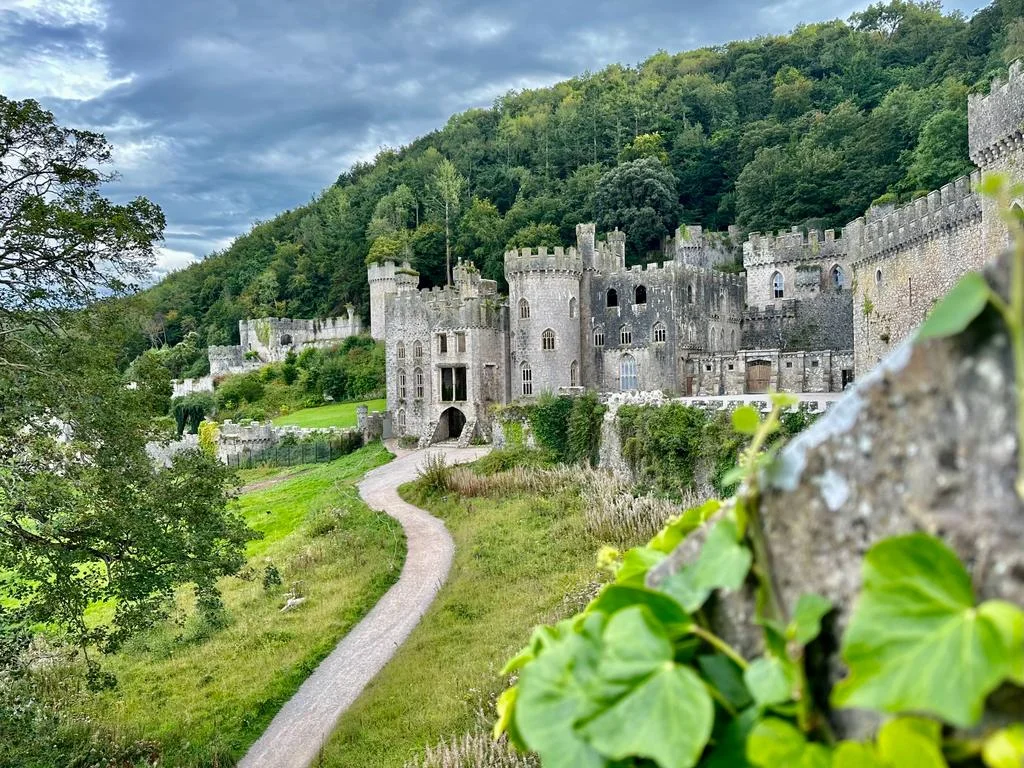California-in-England was a pleasure park opened in 1931 by Alfred Cartlidge on 70 acres of wooded land a couple of miles south of Wokingham in Berkshire. The site contained a 6-acre lake known as Longmoor Lake and he soon developed a pleasure garden along the west side. The lake was described as “Berkshire’s best bathing resort and acknowledged by medical authorities to be beneficial to health”. During the early years the park was called Longmoor Lake but shortly after it became known as California in England. The “California” name appeared on maps as early as the 1870s and likely originated from a brickworks that previously occupied the site.
In addition to the lake, which featured swimming and pleasure boat rides, there was a kids paddling pool, picnic areas, a zoo, a small water chute and the popular Snake Train – a road train that offered fast exhilarating rides around the grounds.





In 1937, a large Art Deco pavilion was constructed, featuring a glass-floored ballroom along with a licensed restaurant and bar. Regular Saturday night dances were held, as well as Sunday luncheons. The venue quickly became popular for large-scale events, hosting work outings, wedding receptions, and conferences. The dining hall could accommodate up to 1,000 guests. That same year, a miniature railway was built, which was later expanded and rerouted.




The site was requisition during the war to become an aircraft parts factory and reopened to the public in 1946.
In 1949, Mr. Cartlidge’s daughter, Vera, and her husband, George Bryan, borrowed £6,000 and went off to create their own pleasure park at Drayton Manor. They developed it into the major attraction it is today, incorporating many successful features from California, including a zoo, ballroom, and large-scale catering. They even had their own Snake Train. The Bryan family continued to run the park for over 70 years. Today, Drayton Manor remains a prominent name in mass catering, offering a range of conference rooms, suites, and meeting facilities.

Mr Cartlidge died in 1955 and in 1960 the park was sold to George Studd who converted it into a holiday camp with chalets being built in the grounds. The main pavilion building was retained along with some of the old attractions.



In March 1965 it was sold to the Caister Group for £65,000 who later built a residential mobile home park.
In 1973, most of the site was sold to Wokingham Rural Council, which announced plans to convert it into a public recreation area. By this time, the site had become rundown, and most of the old holiday camp chalets had already been demolished. Plans were made to establish a touring caravan site, using the old concrete chalet foundations as hard-standing. Thirteen chalets remained, privately owned under leases with 20 years remaining. The former manager’s house was kept as an information center, and the 1930s paddling pool and tennis courts were refurbished. The sale did not include the mobile home park.
In 1975 members of Bracknell sub aqua club donated their time to remove 30 old wooden posts from the lake which were left over from the days of speedboat racing. It was planned to keep the main entertainment pavilion and to lease it to a commercial company but sadly it was destroyed by fire in 1976.
The site is still open today and remains a popular recreation area. Hardly anything remains from the old days.



